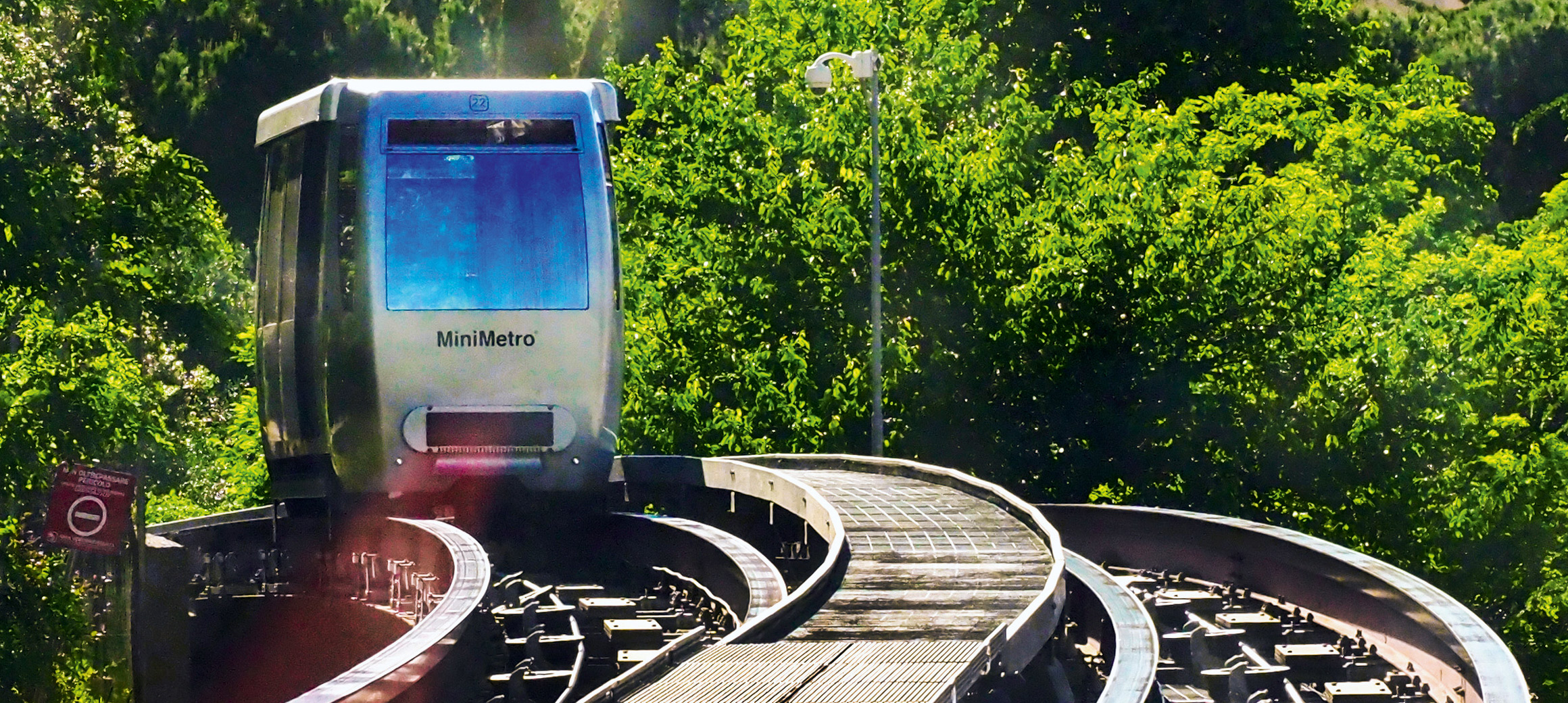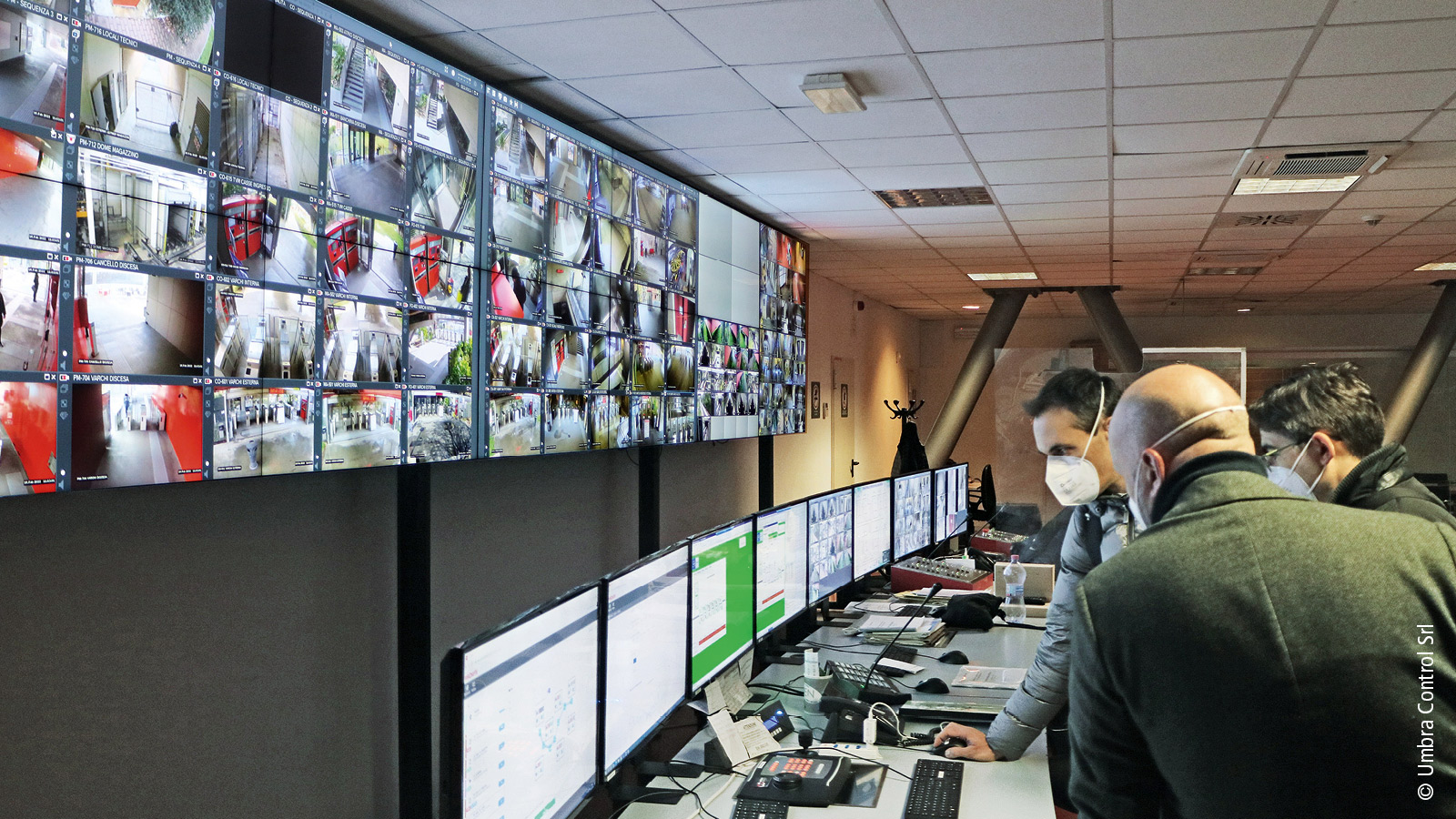

PC-based control in infrastructure automation
If you want to ride the cable cars, you don't necessarily have to go to San Francisco. A modern counterpart has been in service in Perugia, Italy, since 2008. To ensure that the fully automatic Minimetro continues to reliably transport residents and tourists alike to the historic old town, the entire control technology of the auxiliary services of every station was modernized. The system integrator Umbra Control was responsible for the demanding migration, with PC-based control technology from Beckhoff.
The timeframe for public transport projects is usually tight – and in the case of the comprehensive modernisation of the Minimetro building automation control system, particularly tight. The conversion was planned from March 2021 to December 2021. What initially sounds like a lot of time proved to be quite challenging under the given framework conditions. "After all, we could not simply paralyze rail traffic to the old town of Perugia for weeks or months – not even for a day," Giorgio Passeri, R&D Manager at system integrator Umbra Control, points out one challenge. "The Minimetro is the most important main transport axis of the local public transport system to the historic old town of Perugia," Monia Mariani, engineer in charge of the project at the operating company Minimetro SPA, specifies the importance of the modernisation project.

On a total length of 3.5 km, 25 fully automatic cabins run between the seven stations and transport about 3 million tourists and residents of Perugia every year. Commuters also like to use Perugia's cable cars to travel from the free car park in the west of the city to the main railway station, which was integrated into the route during construction in 2007/2008. Since the start of operations in 2008, around 36 million tickets have been sold to date.
Given its strategic importance, it is only logical that Umbra Control had to ensure the continuity of operations. "In all our considerations, we had to take into account that the technicians in the control centre had to be able to monitor and operate all the facilities in parallel at all times, either with the old system or with the new one," clarifies Giorgio Passeri. Therefore, he and his team planned the modernization, which was classified as extraordinary maintenance, as a step-by-step migration from the very beginning. Moreover, all work on the system was done outside the railway's operating hours, mainly at night.
Umbra Control designed and implemented the security and video surveillance system for Minimetro, as well as the temperature and fire detection system for the entire site, with special attention to the tunnels and the technical rooms. The monitoring of the entire system is entrusted to the Visiosuite Scada software, developed by Umbra Control.
System integrator completes portfolio with PC-based control
Founded in Perugia in 1975, Umbra Control began its activities in the field of safety systems. Over the years, the company has grown steadily and is now active throughout Italy as an installer and system integrator. Umbra Control implements complex building automation projects for private, public, industrial and cultural facilities, usually on a turnkey basis, from the idea for automation through all levels (project, development, adaptation, configuration, technical training, maintenance) with all necessary technology updates up to the end of the life cycle. Beckhoff has long been a very important technology partner for Umbra Control. "Beckhoff provides us with an open system; thus, it always leaves us as a system integrator the option to fulfil modifications and extensions based on customer requirements or to contribute our own know-how," Giorgio Passeri explains. And, according to Giorgio Passeri, "the very reliable service gives us as a system integrator the certainty of having a solid and present partner at our side."

BACnet out, EtherCAT in - always overnight
Specifically, Umbra Control used Beckhoff technology to replace a BACnet-based automation system that had been in use since commissioning in 2008."This technology simply had had its day, was no longer really maintainable and no longer met the requirements necessary today," Monia Mariani points out the need for action.
The control and monitoring technology of all seven stations was therefore comprehensively modernized. In the meantime, the operator uses Beckhoff technology to monitor and control the entire building and other infrastructure from the control center, including lighting (individual luminaires as well as lighting scenarios), switches, UPS, lifts, escalators, ventilation systems, doors, gates, temperature, wind and smoke sensors, TV screens, CCTV (Intelligent Video Analytics). A total of 850 digital and analog inputs are recorded in the stations and 570 outputs are controlled from the control center. Sixteen CX8190 controllers in the stations and one CX2062 as master act as data collectors - usually extended by remote I/Os with the aid of BK1100 couplers. The terminals predominantly used are: EL1809 (16 DI) and EL2809 (16 DA 24 V DC, 0.5 A) EtherCAT Terminals. In addition, there are EL3208-0010 analog terminals with 8 analog inputs (16 bit) for temperature sensors (PT1000 and NTC) and two-channel EL3012 terminals (0...20 mA, 12 bit, differential) for analog signals on the Minimetro line, for example anemometers and turbidimeters. The components and units in the individual stations are mainly connected to the I/Os via existing relays and potential-free contacts (doors, lighting). "Minimetro continues to rely on the originally installed infrastructure here," adds Mirko Vincenti, Industry Manager Infrastructure and Building Automation at Beckhoff Italy.
Communication at control level takes place via EtherCAT and to the control center via the Automation Device Specification (ADS) protocol. The security concept is divided into over 180 intrusion detection zones.
Unrestricted confidence in technology and support
The improvements for the operator Minimetro consist, among other things, of having a very reliably automated system that uses the latest technologies and can be expanded at any time in terms of the I/O level. "The Beckhoff technology guarantees us long availability of the hardware – an important point in public transport," Monia Mariani points out. Due to the openness of PC-based control, the customer has the option of using future expansions (sensors, subsystems with standard protocols) and also other Scada software with ADS, OPC UA or other interfaces such as Modbus-TCP.
Giorgio Passeri from Umbra Control, who has been implementing various projects with Beckhoff technology since 2014, emphasizes another aspect: "Above all, the fact that a company like Beckhoff Italy is always present, from pre-sales with experienced sales engineers to technical support with experts, gives us solid confidence as a system integrator." Added to this is the fact that with Beckhoff technology it is possible to integrate almost any signal that the application requires, no matter how exotic. "The flexibility at I/O level and the Beckhoff runtime environment make our Visiosuite Scada software complete," says Giorgio Passeri.
Migration without a single interruption to operation
Mirko Vincenti's support was also very important during the initial project phase. "The joint planning of the individual migration steps was a challenge," admits Mirko Vincenti, "because the main focus was ultimately on the uninterrupted exchange of hardware and software.” This was only possible because every possible point of failure was first thoroughly analyzed. In the end, there was not a single minute of downtime or even a failure. "No less important is secure operation," adds Giorgio Passeri, referring to the company history of Umbra Control: "Our company started 40 years ago as an installer of burglar alarm systems." At that time, Umbra Control focused exclusively on physical security, but cyber security has long been one of its core competencies.
With PC-based control, Beckhoff gives the system integrator the opportunity to implement the right strategy for each project in terms of encrypting information and securing data with the right algorithms. For complete protection of the Minimetro, the system integrator secures all software layers, starting in the field, through the controllers, the network, and to the Scada software with its server-side application and especially the client-side frontends. Mirko Vicenti comments: "The PC-based control from Beckhoff offers everything we need for secure communication." Giorgio Passeri confirms: "Accordingly, the security measures were easy to implement – also thanks to the support from Beckhoff Italy." As a closed system, the Minimetro technology has no points of contact with the Internet, so the real threat could only be an internal attack, such as MiTM (Man in the Middle) or sniffing. Nevertheless, all the necessary guidelines for encrypted OPC-UA communication with certificate exchange and Secure ADS were implemented.
In retrospect, the development of the decentralized architecture with the local use of the EtherCAT connections and the establishment of OPC UA communication between the controllers themselves and with the control room are the most challenging part of the project. "Beckhoff systems will also be used in the next projects to further increase the safety level of our architecture and the reliability of the implemented systems. We look forward to combining our know-how with technologies from Beckhoff," concludes Giorgio Passeri.